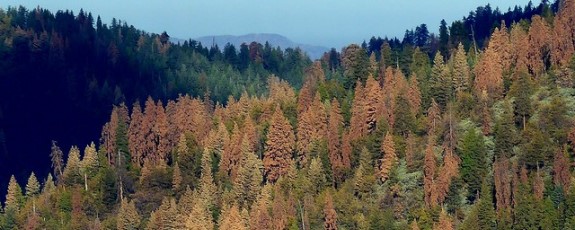Drought is a driver of forest disturbance that impacts various forest ecosystem processes and increases forest susceptibility to other disturbance agents. Quantified as the cumulative lack of precipitation in a given area, drought indices can be used to quantify the direct effects of moisture stress on forests as well as related and interacting forest disturbances. As temperatures are anticipated to increase and precipitation is anticipated to become less consistent across the region, the impacts of drought may become more severe in the Northeast. We used 20 years of data from the US Drought Monitor (USDM), categorized into the four of the USDM drought severity categories found in the region: D0 - Abnormally Dry, D1 - Moderate Drought, D2 - Severe Drought and D3 - Extreme Drought. 1

The data indicate that while the number of weeks in moderate to extreme drought is relatively stable over the study period, the number of weeks with abnormally dry conditions has increase slightly.
The same pattern exists for the percent of the region experiencing drought in any given year, with stable trends for moderate to severe drought but slight increases in the percent of the region experiencing abnormally dry conditions.
| Data Program | Years | Org | Data Products |
|---|